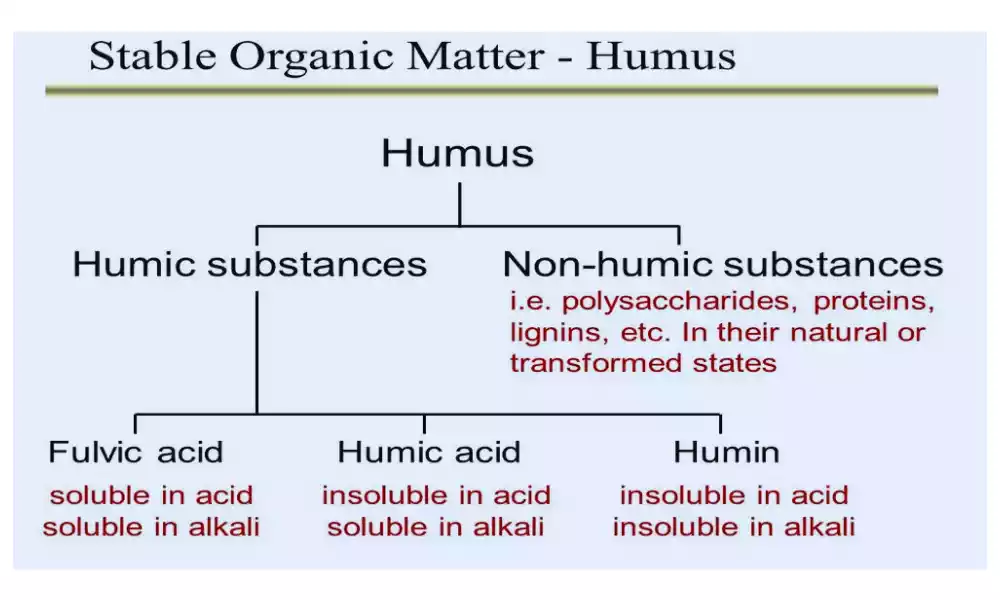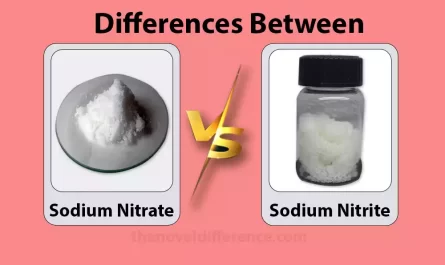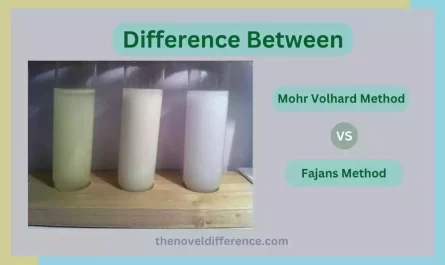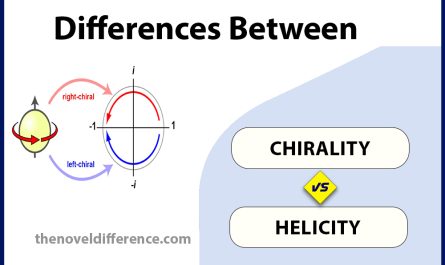Introduction of Humic and Non-Humic Substances
The soil, which is the foundation of terrestrial ecosystems is filled with a plethora of organic compounds that are essential to the survival of life. These organic compounds are broadly classified into non-humic and humic substances and are crucial in determining the health of the soil, its fertility, and its functioning.
Humic compounds, resulting from the breakdown of organic matter over time, comprise complex molecular structures. They are famous for their brown-to-black shades. They can significantly affect soil properties like the retention of water, availability of nutrients, and cation exchange capacity. Some notable examples of this category include fulvic acids, humic acids, and Humin.
Contrary to non-humic substances are usually simpler in their structure, and are directly from microorganisms and plants. They include components such as carbohydrates, proteins, as well as simple organic acids. These compounds are essential in the first stages of the decomposition of organic matter and are the fuel for the biological processes of the soil.
In combination, the two categories of chemicals interact, creating an environment that is harmonious for microorganisms and plants and, consequently, sustaining the global cycle of carbon and nutrients. When we look deeper into the nuances of these substances the significance of both non-humic and humic substances in shaping the world that surrounds us becomes evident.
A brief overview of organic matter in the soil
Organic matter in the soil (SOM) is an essential component of soil. It is a mixture of animal and plant residues microbes, as well as substances produced by microbes. It plays a crucial role in soil’s physical, chemical, and biological characteristics, making it crucial to the well-being and fertility of the soil.
1. Components of Soil Organic Matter:
- Living Organisms: These include large microbial communities, such as protozoa, fungi, and bacteria, and the larger fauna of soil like earthworms.
- Remains of fresh residues: This is a recent addition of animal and plant materials that are still in the initial stages of decomposition.
- Organic matter that has been decomposed: It is organic compounds that are stable and are not susceptible to further decomposition. This includes non-humic as well as humic substances.
2. Roles of Organic Matter in Soil:
- Soil Structure: Organic matter aids in the creation and stabilization of soil aggregates, enhancing soil structure. This increases soil aeration and water infiltration. It also decreases erosion.
- Water Retention: Organic matter enhances the soil’s capacity to hold water, which makes it more accessible to plants.
- Nutrient Cycle: As organic matter decays it releases essential nutrients to the soil which are then used by plants. SOM functions as an accumulator of these nutrients.
- Cation Exchange Capacity (CEC): Organic matter increases the CEC of the soil and increases its capacity to store and transfer positively charged ions (cations) such as magnesium, calcium, and potassium.
- pH Buffering: SOM functions as a buffer and regulates pH variations in soil.
- Disease Control: Organic-rich soils tend to be more resistant to pests and disease issues, largely because of the beneficial microbial communities that are supported by organic matter.
The importance of maintaining organic matter Due to its many roles, ensuring or growing the amount of organic matter in soil is essential for sustainable agricultural practices. It helps improve soil health, improves yields of crops, and also helps in reducing the effects of climate change by storing carbon from the soil.
Organic matter in soil provides essential nutrients to the soil. It is the base for health, fertility, and efficiency. In the absence of it, soils will become not productive as ecosystems could struggle to survive.
Significance of soil organic matter components
The organic matter of soil (SOM) is a vast and crucial element in terrestrial ecosystems. Each of its constituents plays a distinct role in supporting soil health and functionality.
Here’s an analysis of the importance of the following components:
- Living Organisms:
- Microbial Biomass (bacteria, fungi, protozoa, etc. ): Microorganisms break down organic compounds, recycling nutrients and making them accessible for plant use. They are also involved in the production of humus. This further improves soil structure and functions.
- Soil Fauna (earthworms, nematodes, mites, etc. ): The animals help in organic matter decomposition as well as improve soil aeration, and assist the mixing of soil layers increasing soil structure and distribution.
- Fresh Residues:
- Plant Debris: This is an immediate source of nutrients when it is decomposed. When plants shed their leaves, die, or release exudates from the root and release exudates, they produce organic compounds that are incorporated into the soil’s matrix.
- Animal Residues: When animals eliminate the waste they produce and/or die, the relics are organic matter with nutrients that enrich the soil.
- Decomposed Organic Matter:
- Humic Substances (humic and fulvic acids, human): These are the most stable elements of SOM. They improve soil structure, enhance water retention, and boost the capacity of soils to exchange cations. Their intricate structures can also be a factor in capturing carbon, thereby aiding in the mitigation of climate change.
- non-humic substances (carbohydrates protein, lipids, carbohydrate): These simpler organic compounds are crucial in the immediate supply of nutrients and also serve as food sources for a variety of soil microorganisms, thereby sustaining an active soil ecosystem.
- Byproducts of Microbial Activity:
- Exopolysaccharides and other exudates: Made by microbes These substances aid in stabilizing soil aggregates as well as improving the soil’s structure.
- Secondary Metabolites: Certain microbial products can inhibit disease-causing organisms and contribute to the overall health of plants.
- Organic Compounds and Functional Groups:
- Carboxyl and Hydroxyl Phenolic Groups: The functional groupings within SOM enhance the ability of soil to retain and bind positively charged electrons (cations) and are a key element in soil’s capacity to buffer.
Overall Importance of SOM Components:
- Soil Fertility: The components of SOM, both directly and indirectly, add vital nutrients to soils helping to support crop growth and yields.
- Sol Health: These soil health indicators support a large and diverse microbial community that results in improved and healthier soil.
- Ecosystem services: In addition to the benefits of agriculture, SOM components play roles in the purification of water carbon sequestration, water purification, and support for biodiversity.
- Soil Conservation: A well-structured soil created by SOM reduces soil erosion and increases the retention of water which makes landscapes more tolerant to extreme temperatures.
The organic components of soil matter are the primary components of soils that are fertile and durable. They interact in complex ways and form a harmonious system that supports both animal and plant life.
Basic Definitions
Basic Definitions: Humic and Non-Humic Substances
- Organic matter: All carbon-based compounds created by animals or plants, which is found in soil. Organic matter is made up of carbon compounds that are alive and dead, as well as different stages of decomposition.
- Humic Substances: They are highly stable and complex organic compounds resulting from the decomposition of organic matter. They are responsible for the dark hue of soils. Humic substances are further classified into:
- Humic Acid: The majority of Humic substances dissolve in alkaline waters but dissolve when the pH is reduced (acidic situations).
- Fulvic Acid: It is a fractional amount of the humic compounds that remain liquid in water at all pH levels.
- Human: A percentage of the humic compounds that are not water-soluble at any pH.
- Non-Humic Substances: These are the simplest organic compounds found in soil that originate directly from microorganisms and plants. They aren’t as durable as humic substances, and they degrade more quickly. The nonhuman chemicals include
- Carbohydrates: The sugars starch and cellulose, primarily from plants.
- Proteins: The organic compound is made from amino acids. They can be made from plant residues or the biomass of microbial organisms.
- Lipids: Waxes, fats, mostly from plant sources.
- Basic Organic Acids: low molecular weight acids usually arise from the beginning phases of organic matter decomposition.
- Decomposition: This is the process through which organic matter is broken into smaller forms by the action of microorganisms bacteria, and fungi.
- SOIL OMATIZING MATERIAL (SOM): The organic matter in soil composed of animal and plant residues in different stages of decomposition cells and tissues of soil organisms and the substances that soil organisms synthesize.
- Cation Exchange Capacity (CEC): A measurement of the capacity of soils to store the positively charged electrons (cations). Organic matter, specifically organic matter, such as humic substances, may increase the soil’s CEC.
- soil aggregates: soil particles (sand silt, silt, clay) joined into clusters. Organic matter, particularly the humic compounds, plays an important role in the development and durability of these aggregates.
Through understanding these definitions, one can gain an understanding of the processes and components that regulate soil organic matter and its crucial importance to the health of soil and fertility.
Characteristics of Humic Substances
Humic substances are organic compounds with complex structures that are primarily formed from the breakdown of animal and plant wastes. They are the primary constituents of soil organic matter and are essential for maintaining soil health and fertility.
Let’s look at the properties of these elements:
- Chemical Structure:
- Humic compounds have a large molecular mass and complex structure. It is which is evident in aromatic rings, chains that are aliphatic, as well as many functional groups (carboxyl carbonyl, phenolic, etc. ).
- Due to their intricate structure, they display a range of chemical properties, including interaction with metals, binding with clay particles, and creating the chelates that are formed by minerals.
- Color:
- Humic compounds add a hue to the soil. Humic acids typically provide a brownish shade and fulvic acids typically yellow or yellow-brown.
- Solubility:
- Humic Acid: It is soluble in water when alkaline conditions prevail However, it becomes insoluble when the solution becomes more acidic.
- Fulvic Acid: It remains soluble in water at all pH levels, separating it from other humic substances.
- Humans: Water is insoluble regardless of pH. It is also insoluble with dilute alkali.
- Molecular Weight:
- Fulvic acids have a lower molecular mass as compared to humic acid.
- Humin and humic acids possess greater molecular mass and therefore are less mobile in soil.
- Reactivity:
- Humic substances may create complexes with metals that affect the mobility of these substances and their availability within the soil.
- They impact soil’s capacity for exchange of cations (CEC) because of their many functional groups that store and exchange cations.
- Role in Soil Health:
- Soil Structure: Humic compounds aid in the aggregation of soil particles upgrading soil’s structure as well as retention.
- Nutrient availability: They can enhance the accessibility of essential nutrients, due to their ability to chelate, making the minerals more readily available to plants.
- Water Retention: They improve the capacity of soils to hold water and help improve moisture retention.
- Environmental Interactions:
- Humic substances may be a source of interaction with pesticides, herbicides as well as other chemical compounds, altering their mobility and degrading the environment.
- They play an important role in carbon sequestration, assisting in the long-term storage of carbon soils.
- Biological Interactions:
- Humic substances affect microbial activity in soils, typically creating binding sites or substrates for microbes.
- They may affect root growth and improve the health of plants, often functioning as signaling molecules for the root systems of plants.
- Origin and Formation:
- It is formed through the microbial breakdown of animal and plant matter, it is subject to processes such as humification.
- The particular structure and properties of humic substances may differ depending on the source material as well as the environmental conditions that influence their development.

Humic substances aren’t just essential in the physical and chemical properties of soil, they also play an essential part in the biosphere of soil. Their many interactions are essential to the well-being and health of terrestrial ecosystems.
Characteristics of Non-Humic Substances
Non-humic substances are the simplest organic compounds found in soil, primarily resulting from the decomposition directly of microorganisms and plants. They differ from the more intricate and stable humic compounds. These are the main features of non-humic substances
- Chemical Structure:
- Non-humic compounds have a more simple molecular structure than the humic substances.
- They typically contain amino acids, sugars basic organic acids, and many other simple molecules.
- Solubility:
- A variety of non-humic compounds, including simple organic acids and sugars are readily dissolvable in water.
- Their solubility makes it easier for them to be absorbed by microorganisms and plants.
- Decomposition Rate:
- Because of their more simple structure, nonhumic substances can decompose more quickly, making them less able to be absorbed by the soil.
- Microorganisms frequently utilize them as an energy source.
- Molecular Weight:
- In general, non-humic substances are lighter in molecular mass than humic substances. This makes these substances more mobile within the soil.
- Role in Soil Health:
- Initial Decomposition: Non-humic compounds are crucial in the early phases of organic matter decomposition, and act as the main food source for soil microbes.
- Nutrient Supply: When they break down they release nutrients, playing an important role in short-term nutrient cycles in soil.
- Biological Interactions:
- Many non-humic substances are used by microorganisms and plants to generate energy and grow.
- They have the ability to influence microbial populations and activity in soil, due to their function as the primary substrate.
- Environmental Interactions:
- Being more flexible, non-humic substances may affect the short-term carbon dynamics in soil.
- Decomposition of these substances can affect soil pH, particularly when they produce organic acid.
- Origin and Formation:
- Indirectly made by plant waste (like the lignins, cellulose as well as proteins) and other microbial byproducts.
- Their traits may differ depending on the source of their origin such as whether they are derived from plants, their roots, or the activity of microbial organisms.
- Function in Ecosystems:
- They are a major power source within food webs which fuels the expansion of primary decomposers within the soil.
- Contribute to soil respiration as well as carbon dioxide release and contribute to the carbon cycle in the short term.
Although non-humic substances may not be as long-lasting or intricate as their counterparts with humic properties, however, they are crucial for the immediate energy requirements for the ecosystem of the soil. They also are a key element in decomposition at the beginning of the stage and the cycle of nutrients.
Humic and Non-Humic Substances in the Comparative Chart
Comparative Chart: Humic vs. Non-Humic Substances
| Feature/Characteristic | Humic Substances | Non-Humic Substances |
|---|---|---|
| Chemical Structure | Complex with aromatic rings, aliphatic chains, and numerous functional groups. | Simpler structures like sugars, amino acids, and simple organic acids. |
| Color | Typically dark (brown for humic acids, yellow-brown for fulvic acids). | Generally colorless or light-colored. |
| Solubility | Varies based on pH and type (e.g., humic acid is soluble in alkaline conditions). | Often readily soluble in water. |
| Molecular Weight | Higher molecular weight. | Lower molecular weight. |
| Decomposition Rate | More stable and decomposes more slowly. | Decomposes more readily due to simpler structure. |
| Origin & Formation | Formed through long-term microbial decomposition of plant and animal matter. | Directly derived from plant residues and microbial byproducts. |
| Role in Soil Health | Improve soil structure, water retention, and nutrient chelation. | Initial organic matter breakdown, short-term nutrient supply. |
| Biological Interactions | Impact microbial activity, and root growth, and can act as signaling molecules. | Directly utilized by plants/microbes for energy and growth. |
| Environmental Impact | Role in long-term carbon sequestration and interaction with pesticides. | Influence short-term carbon dynamics and can affect soil pH. |
| Examples | Humic acid, fulvic acid, humin. | Carbohydrates, proteins, lipids, simple organic acids. |
This comparative chart provides a clear distinction between the characteristics and roles of humic and non-humic substances in soils. Both types of substances, despite their differences, play crucial roles in maintaining soil health and ecosystem balance.
Environmental and Agricultural Significance
Humic Substances: Humic substances, which are the primary elements of soil organic matter can significantly affect the health of soil and fertility. The complex and high-molecular-weight substances are derived primarily through the breakdown of animal and plant wastes. They serve a variety of functions:
- Soil Health: They improve the capacity of soils to exchange cations and increase the capacity of soil to store essential nutrients.
- The concept of water Retention: Humic substances encourage soil aggregation and enhance the capacity of water to be held by soils, a crucial aspect in areas that are prone to drought.
- Carbon Sequestration: Because of their stability they can aid in the long-term storage of carbon in soils, and play a role in the mitigation of climate change.
Non-Humic Substances:
They are the most labile components of organic matter in soil. They are composed of simpler organic compounds such as amino acids, sugars, and organic acids that are simple, they are essential for:
- Instant Nutrient Supply: as they decompose they release essential nutrients to the soil.
- Microbiological Activity: as a primary power source for energy production, they greatly affect the microbial population in soils, affecting soil health and structure.
Practical Applications
Humic Substances:
- Fertilizer Enhancers: These are products made from humic compounds, such as fulvic acid and humic supplements, which are frequently added to fertilizers to boost the uptake of nutrients in plants. These supplements are able to help chelate metal ions and make them more readily available to plants’ roots.
- Soil conditioners: Due to their function in promoting soil aggregation they’re utilized in order to enhance soil’s structure, particularly in soils that are degraded due to soil erosion, or overcultivation.
- environmental remediation: Chelating properties can be utilized to treat soils that have been contaminated, by binding to heavy metals and reducing their bioavailability.
Non-Humic Substances:
- Biofertilizers: Based on their direct ancestry from plants’ residues as well as microbial byproducts Non-humic substances can be utilized in biofertilizers to give rapid nutrient enhancement to crop plants.
- Composting: being easily decomposable, they’re essential to the composting process and provide the first energy source for bacteria that decompose.
- Soil Respiration Studies: Their decomposition plays an important role in the process of soil respiration, which makes them essential in studies relating to the dynamics of soil carbon.
Conclusion
Knowing the distinction between non-humic and humic substances extends beyond the realm of academic study. It is crucial to understand the practical application in the fields of agriculture, environmental science, and the health of soil. While humic substances provide long-term benefits to soil structures, retention of water, and availability of nutrients Non-humic substances offer instant energy and nutrients essential for the growth of plants and microbial species.
Both types of chemicals are vital to the well-being and well-being of the soil. In a time of growing environmental threats and the necessity to sustainably manage our agricultural practices, a thorough knowledge of these components will help improve methods of soil management.




